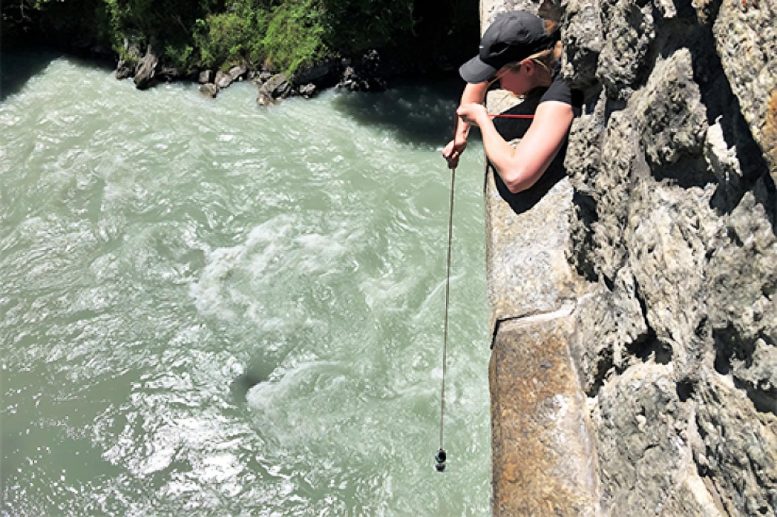
Alkalinity affects the uptake of CO2 and contributes to the long-term buffering capacity of the ocean. Credit: Hereon/Nele Lehmann
A recent study by Hereon examines the impact of dissolved rock on the sequestration of CO2 in the ocean.
Just as adjusting the ingredients in a dish can result in a completely different taste, variations in the substances present in seawater can significantly alter the binding of CO2. The concept of alkalinity, which refers to the ability of the water to neutralize acid, is formed by the breakdown of rocks and their subsequent entry into the ocean. An increase in erosion on land leads to more weathering of silicates and carbonates. The study conducted by the researchers used a model to identify the factors that contribute to increased alkalinity, such as the degree of erosion, the proportion of carbonates in the area, temperatures, catchment size, and soil thickness.
Method and influencing factors
“The model we used is a statistical, not a mechanistic model. We applied it to identify the factors influencing alkalinity based on our compiled data set and to describe their interdependencies,” says Nele Lehmann of the Hereon Institute for Carbon Cycles, lead author of the study, which was an international collaboration with the Alfred Wegener Institute Helmholtz-Zentrum für Polar- und Meeresforschung (AWI) and funding from the Deutscher Akademischer Austauschdienst (DAAD).
If warming continues slowly, alkalinity would drop by up to 68 percent by 2100, depending on the watersheds. That means the ocean’s ability to sequester CO2 would decrease significantly. Rapidly progressing warming, on the other hand, would lead to higher temperatures and thus more precipitation in temperate climate zones. This would increase alkalinity by up to 33 percent. “But that doesn’t mean that more emissions are good for the climate. The impact of alkalinity is small compared to the amounts of man-made CO2 emitted around the world. The process of weathering unfolds its effects over much longer periods of time,” Lehmann said.
Climate change is greatly accelerating the interplay of carbon cycling and weathering that is fundamental to the development of life. The team first looked for existing data. The goal was to find as many alkalinity measurements as possible in the immediate vicinity of erosion measurement sites. To do this, the researchers searched databases and publications and took samples themselves. They conducted the investigation of the alkalinity factors using their new model. The biggest limitation: the erosion rate measurements the researchers used have often only been taken over 20 years, and are complex and expensive. This made it difficult to produce the data set. Especially in the higher latitudes, there are hardly any measurements, so the study is limited to the mid-latitudes.
New questions in the Arctic
Next, Lehmann would like to investigate alkalinity and the erosion rate in the Arctic. There, the data situation is patchy. And climate change is clearly noticeable, so potentially the biggest change in alkalinity flux could also occur. Of particular importance: whether erosion itself is changing as a result of climate change.
Reference: “Alkalinity responses to climate warming destabilise the Earth’s thermostat” by Nele Lehmann, Tobias Stacke, Sebastian Lehmann, Hugues Lantuit, John Gosse, Chantal Mears, Jens Hartmann and Helmuth Thomas, 24 March 2023, Nature Communications.
DOI: 10.1038/s41467-023-37165-w

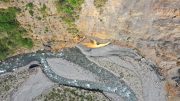

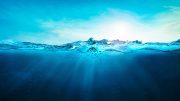
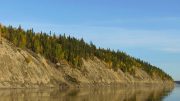


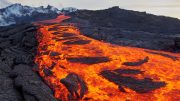
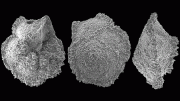
“Acidity, which is mostly supplied from atmospheric and soil CO2, and buffered by the rate of physical erosion, also exerts first-order controls on global alkalinity fluxes.”
The buffering for short and mid-term is controlled by the (bi)carbonate ALREADY dissolved in the oceans, and to a lesser extent borates. The Bjerrum Plot shows a broad plateau for bicarbonate, extending from approximately pH 6.1-8.3, over which the bicarbonate is relatively constant. Over this range, sea water strongly resists changes in pH with the addition of hydronium or hydroxyl ions, staying in the range of 8.1 to 8.3 (Krauskopf, 1967). Silicate weathering is important over long time scales.
Physical erosion is enhanced over chemical erosion by cold temperatures, such as during glaciations, or the the rise of high mountain chains during orogeny.